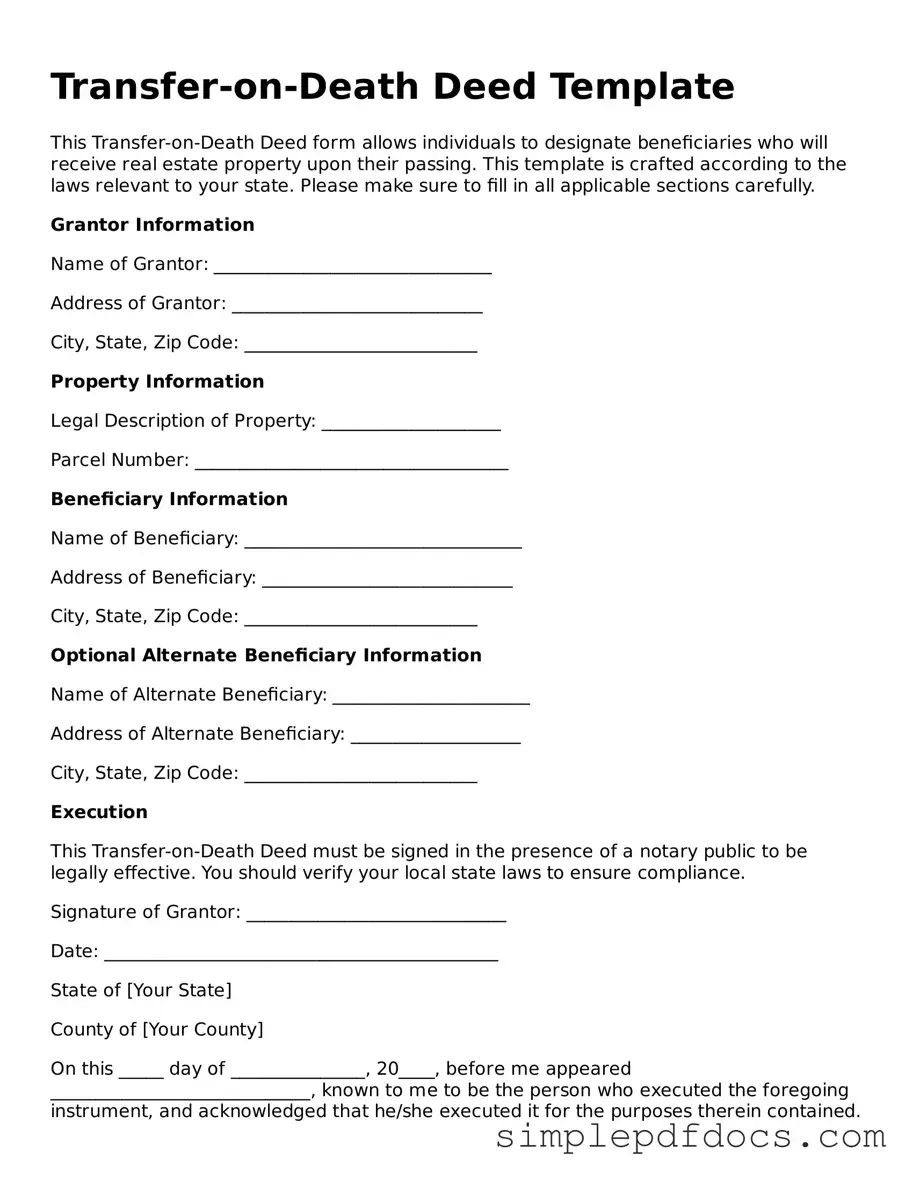Attorney-Approved Transfer-on-Death Deed Form
A Transfer-on-Death Deed is a legal document that allows property owners to designate a beneficiary who will receive their real estate upon their death, bypassing the probate process. This form provides a straightforward way to ensure that property is transferred according to the owner’s wishes without the complications often associated with estate planning. By using this deed, individuals can maintain control over their property during their lifetime while providing clarity and ease for their heirs.
Get Document Here
